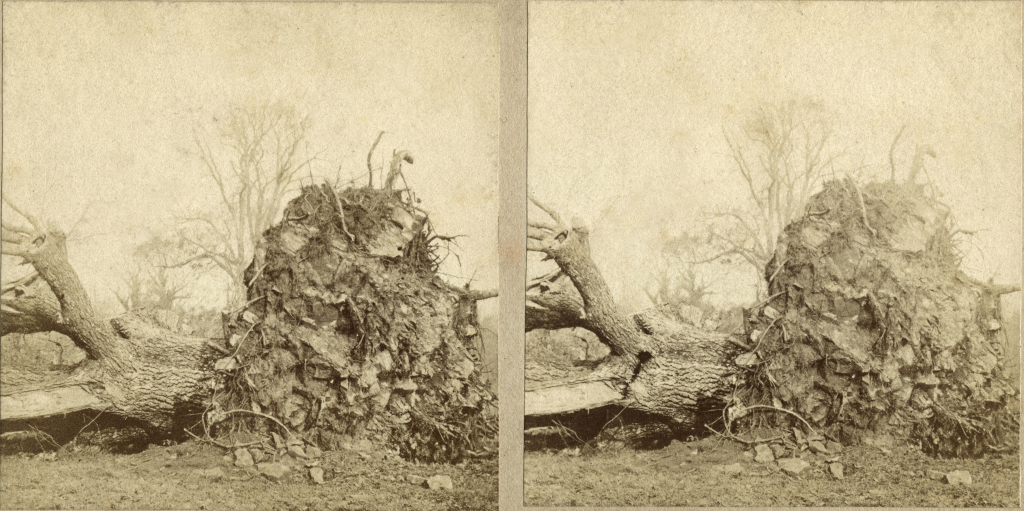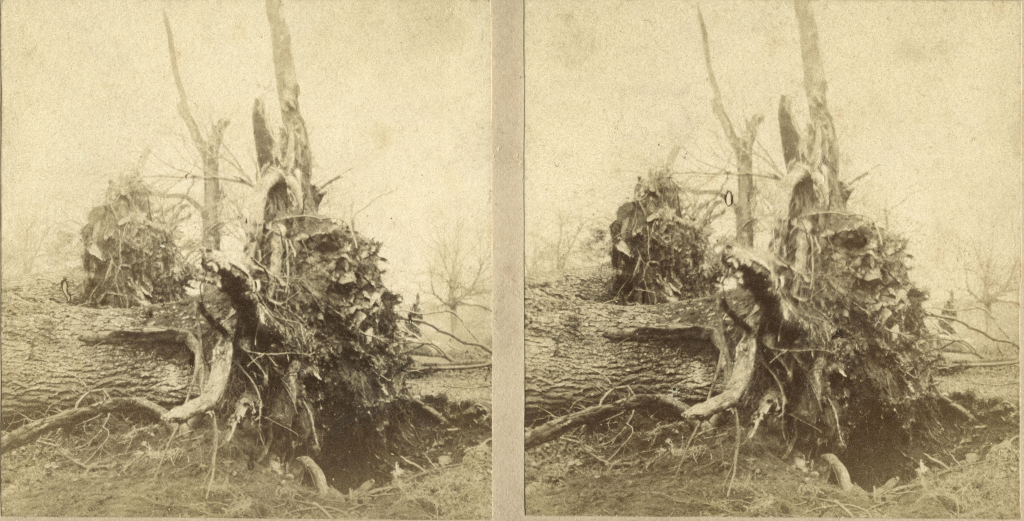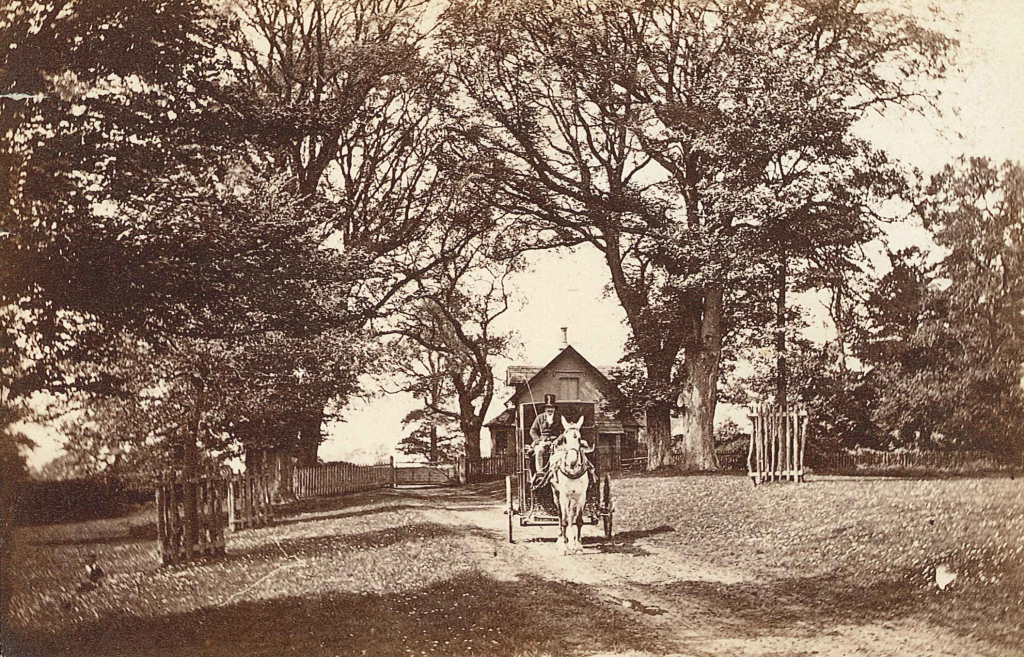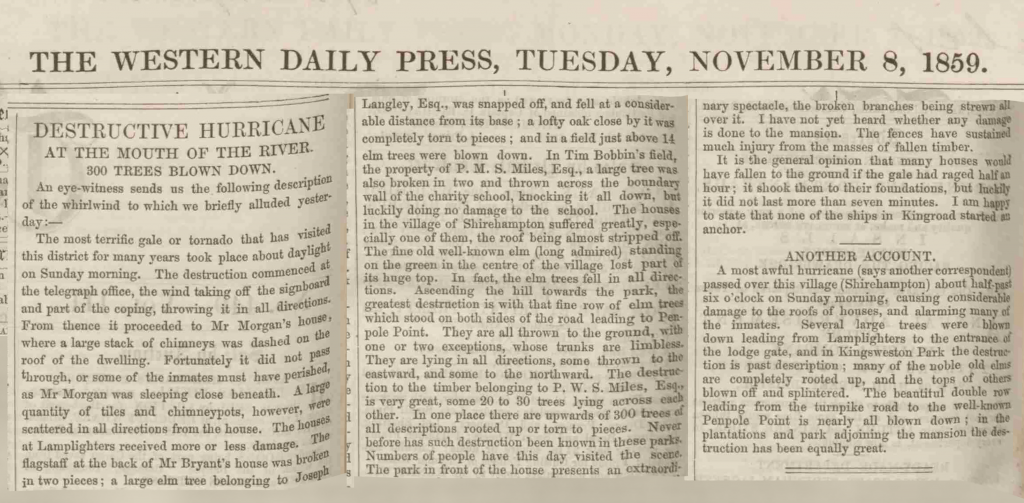This month the news has been filled with a number of serious storms that have brought winds and flooding to several parts of Britain, but 164 years ago Kings Weston also experienced a shocking gale.
Two historic photographs (or perhaps four depending how you’d like to count) have come to us recently that mark a significant event in the history of the estate. The photos are extremely early, now thought to be the earliest photos of Kings Weston know, and are designed for use in a stereoscopic viewer; each of the two photos is taken using separate lenses set the same distance apart as the human eye; when seen through a viewer the eye sees a 3D impression of the view. Whilst the two photos on each card look the same at first glance, they are taken from fractionally different perspectives to create the effect.

The views focus on large a number of massive fallen trees pulled out by the roots and thrown over. On the reverse of each the location is identified as Kings Weston and dated as being from November 1859. They were taken following a violent storm that severely damaged Shirehampton and the Kings Weston estate on the first of that month. We’ve known of this event before, from newspaper articles that described the devastation, but these photos add incredible insight into the aftermath. The UK was subjected to a number of heavy storms around the same time in 1859, the most famous being the “Royal Charter” storm the week before Kings Weston’s. The Royal Charter sank off Anglesey on October the 25th with more than 400 fatalities and the loss of a substantial cargo of gold being brought from Australia. The sinking occupied journalists for days as details of the story became known, but Kings Weston would shortly join it in the national newspapers.

Newspapers at the time describe the winds as arriving before dawn, sudden and ferocious, there’s even the suggestion that it was a tornado, considering the relatively localised trail of damage from Lamplighter’s, through Shirehampton, and into Kings Weston park it’s certainly a possibility. Reports suggest that in just seven minutes upwards of 300 trees brought down. They describe 20-30 trees lying on top of each other and thrown down some northwards but also eastwards. The lawns of the house were scattered with branches and timber and the whole scene became an unlikely public attraction the following day. Particular attention was made of the loss of many great old elms that lined Penpole Lane: it’s these trees that are shown in the recently discovered photos.
Philip William Skinner Miles, then owner of the estate, must have been faced with a huge challenge in cleaning up, and he appears to have quickly set to replanting many of the lost trees with new. A slightly later photo of Penpole Lane, from the 1860s, shows the replacement trees protected by paling fences and are already becoming well established. Opposite Penpole Lodge in this view can be seen one of the elms that survived the carnage, the branches of which are sufficiently distinctive to be recognised in the background of one of the storm photographs seen from the other side; a helpful landmark in locating the photographer’s position in 1859.

Thankfully, for the modern visitor, Skinner Miles chose lime trees instead of elm, or the estate would again have lost them all from Dutch Elm disease in the 1970s and 80s. Many of these lime trees can still be seen lining Penpole Lane and the avenue into Penpole Wood from the Circle.


